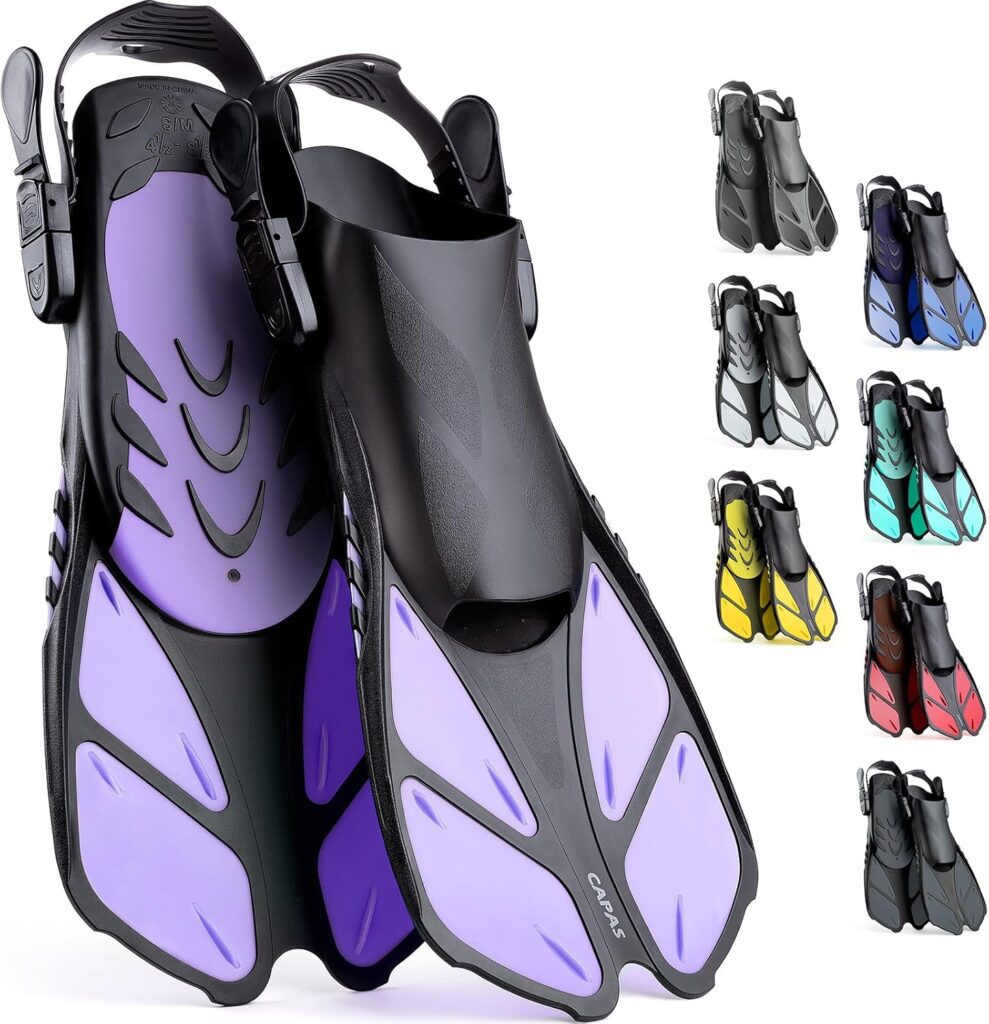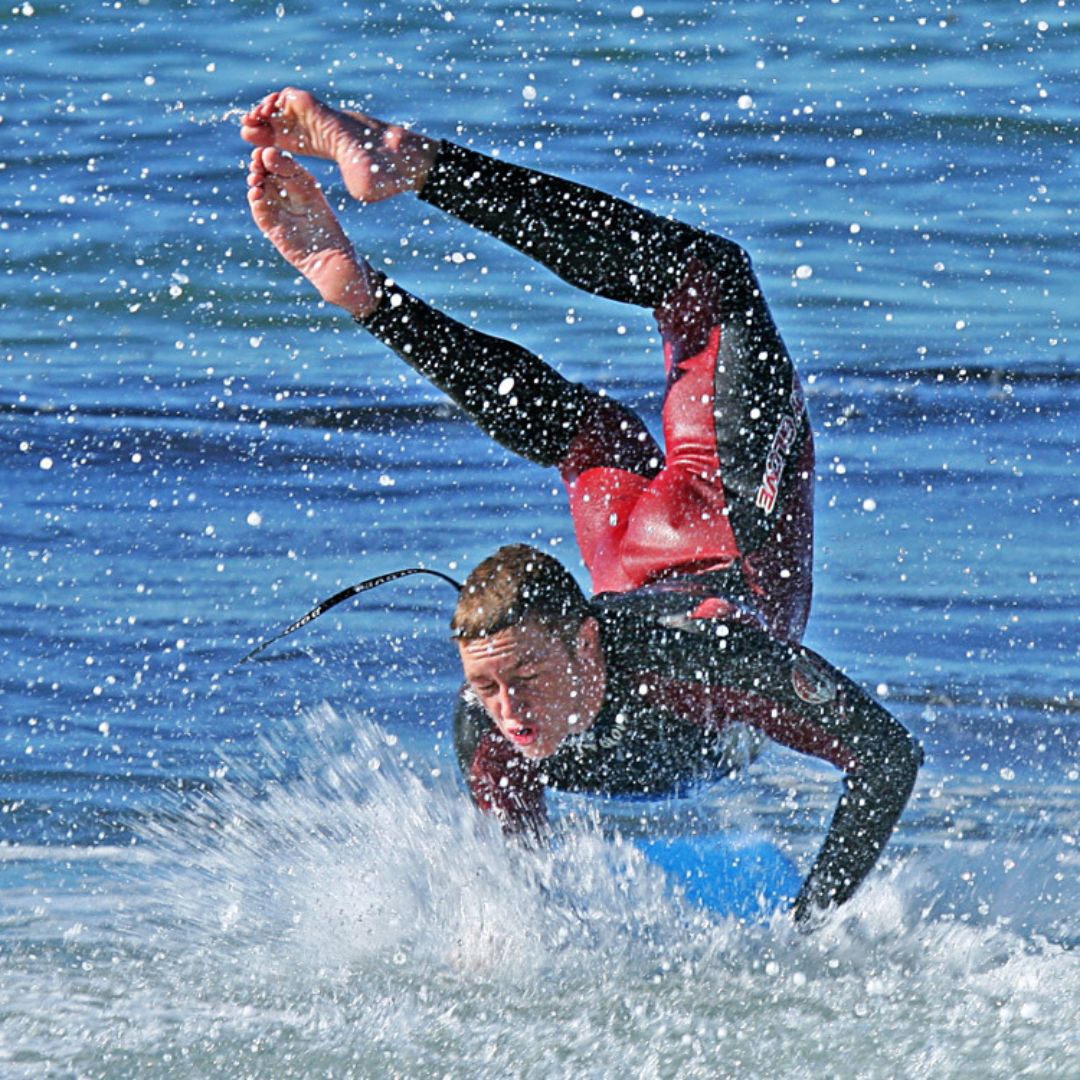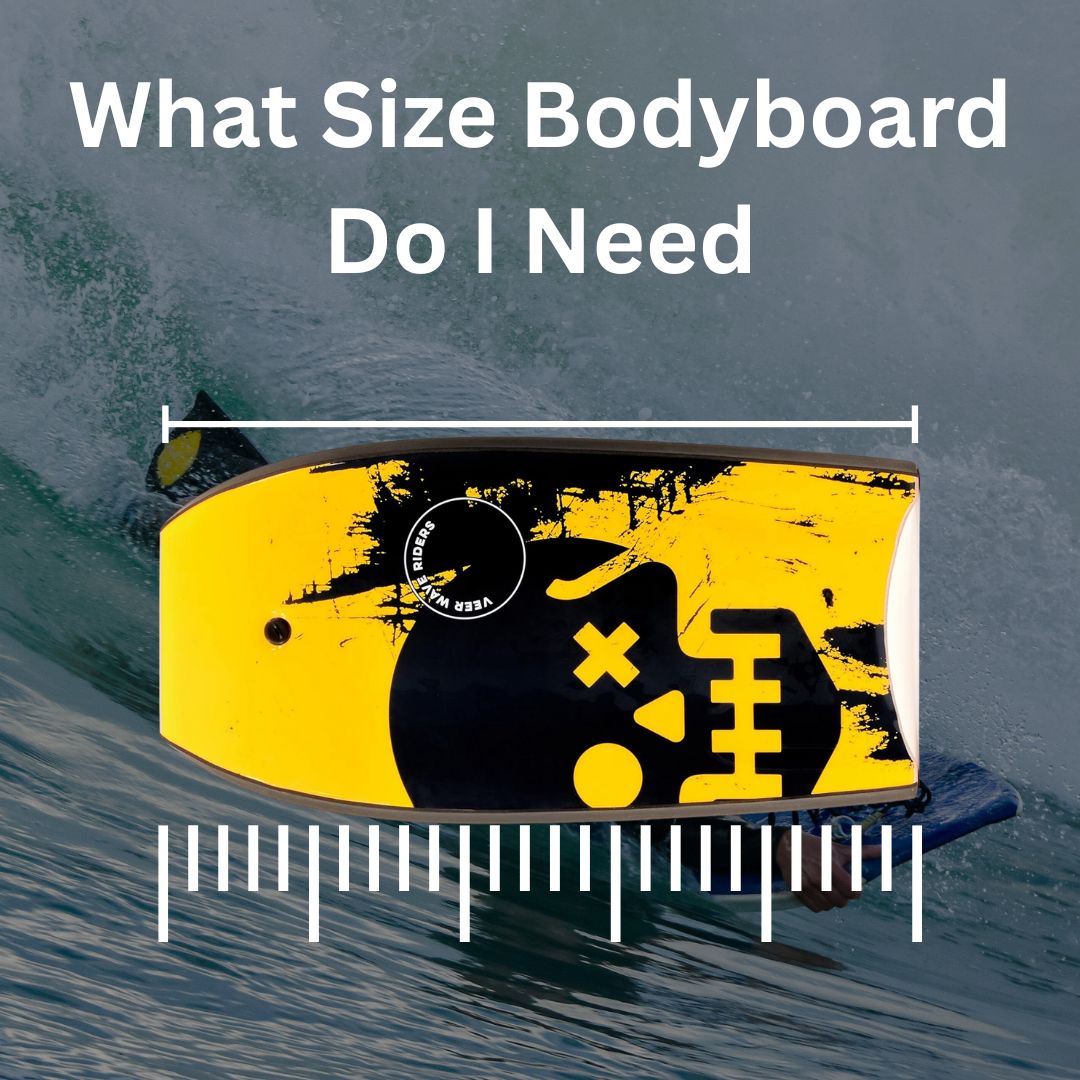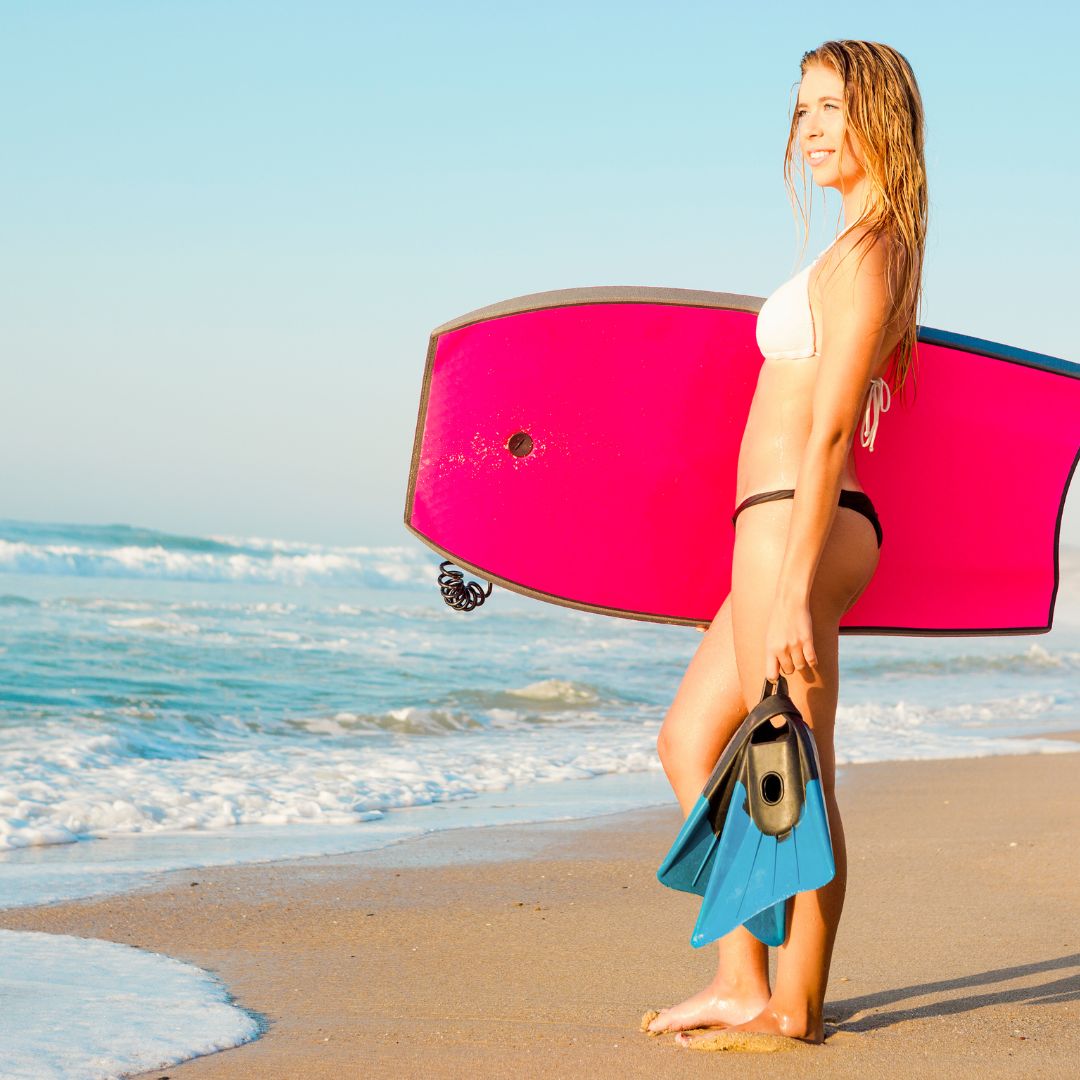Can You Use Snorkeling Fins For Bodyboarding – Bitter Truth
Can you use snorkeling fins for bodyboarding? Absolutely, if your idea of fun is flopping around in the surf like a caffeinated seal with mismatched flippers. But for everyone else hoping to actually ride a wave without feeling like they strapped dinner trays to their feet, we should talk.
This is one of those deceptively simple questions – can you use snorkeling fins for bodyboarding that seems innocent until you’re half-submerged in waist-deep surf, desperately trying to kick toward a wave with fins designed for coral reef sightseeing.
Let’s break it down.
Can You Use Snorkeling Fins for Bodyboarding?
Technically? Yes.
Practically? Only if you’re dealing with very mellow conditions or just messing around in shallow water.
But if you’re serious about catching waves, controlling your ride, or avoiding losing a fin mid-wipeout (and watching it drift to Panama), snorkeling fins are far from ideal for bodyboarding.
Let’s explain why.
Understanding the Difference: Snorkeling Fins vs. Bodyboarding Fins
At first glance, a fin’s a fin, right? Nope. That’s like saying flip-flops and hiking boots are both shoes – they’re just not designed for the same environment.
🐠 Snorkeling Fins:
- Longer blades for slow, energy-efficient kicking.
- Made for calm waters.
- Often full-foot, which can rub and cause blisters in rough surf.
- Slower acceleration and poor maneuverability in waves.
🏄♂️ Bodyboarding Fins:
- Shorter, stiffer blades for explosive power and control.
- Designed to fit snug with or without fin socks.
- Built for strong thrust in short bursts.
- Often feature drain holes and ankle straps to prevent losing them.
The primary issue isn’t whether you can use snorkeling fins for bodyboarding, but whether you’ll enjoy it or survive an overhead swell with dignity intact.
Why Performance Suffers with Snorkeling Fins
If you’ve ever tried sprinting in clown shoes, you’ll have a pretty good metaphor for what snorkeling fins feel like in waves.
Snorkeling fins are designed to maximize glide in calm conditions, not thrust in chaos. When you’re trying to paddle into a wave, every fraction of a second and every kick counts.
FACT: According to the University of Hawaii’s surf biomechanics research, shorter, stiff fins increase paddling efficiency in wave entry by up to 30% compared to long, flexible snorkel-style fins.
In short, bodyboarding is explosive, while snorkeling is a gentle cruise. The mismatch can lead to:
- Missed waves
- Poor control during drop-ins
- Sluggish maneuvers
Comfort & Fit: The Blistering Truth
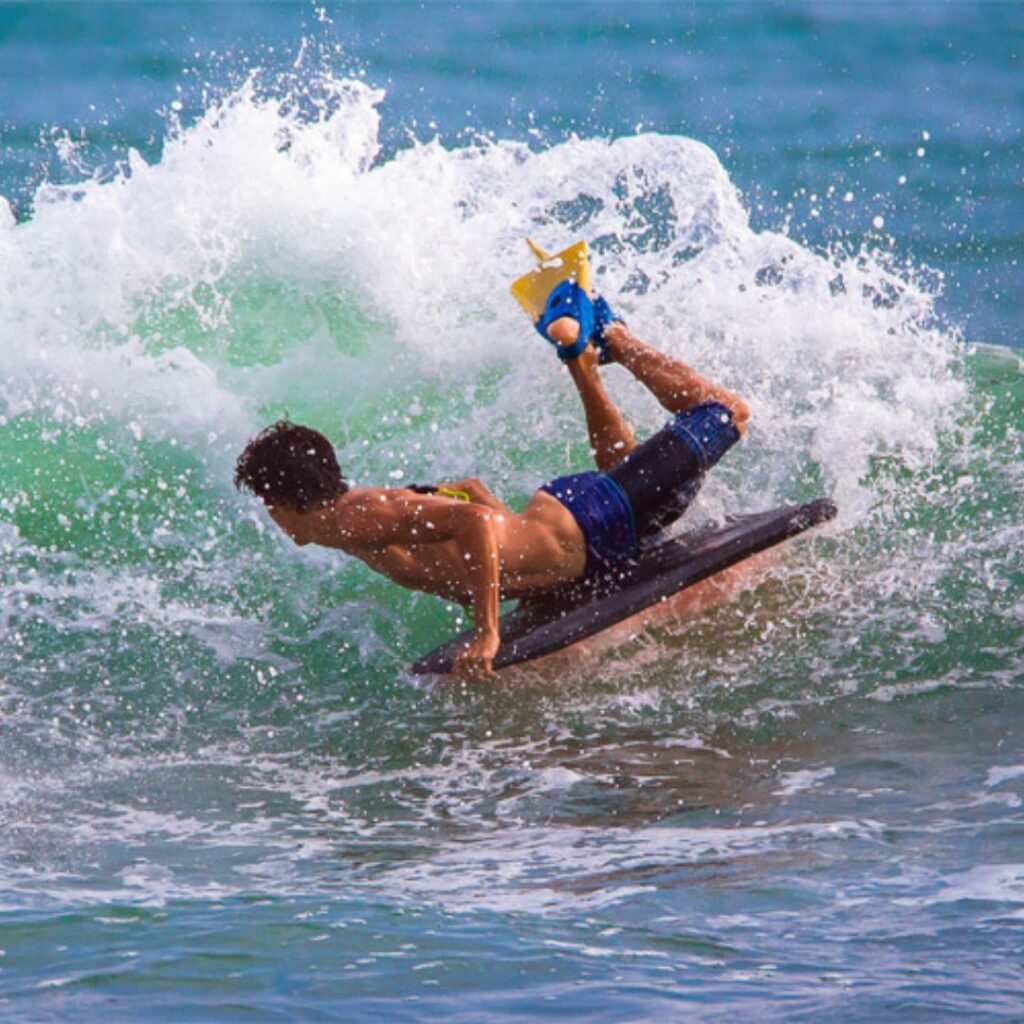
Here’s something folks don’t realize until it’s too late: snorkeling fins can hurt like crazy in surf.
- Full-foot snorkel fins trap sand and water, creating friction hotspots.
- In rough surf, that’s a recipe for raw ankles and bleeding heels.
- They’re not designed to be worn with fin socks, which are essential for comfort in colder water or longer sessions.
Meanwhile, bodyboarding fins are built with:
- Open heels for quick drainage
- Fin tethers or straps
- Compatibility with neoprene socks
So, can you use snorkeling fins for bodyboarding? Absolutely. But your feet might hate you for it.
Are Snorkeling Fins Safe in Surf?
Let’s talk safety. The ocean doesn’t care that you thrifted a pair of snorkeling fins and called it a day.
Risks:
- Long blades = trip hazards when trying to stand in shallow water.
- Harder to kick free if caught in a rip.
- Easier to get knocked off balance when hit by a shore break.
Bodyboarding fins are shaped for quick takeoffs, sharp kicks, and controlled movements – vital when navigating surf breaks.
Using snorkeling fins in waves might not be dangerous on calm days, but in fast-moving conditions? It’s like driving a city scooter in a motocross race.
When Can You Use Snorkeling Fins for Bodyboarding
Okay, we’re not saying snorkeling fins are never usable. Here’s when they make acceptable substitutes:
✅ Beginner conditions:
- Whitewater surfing or playing near shore.
- Learning to kick without worrying about catching big waves.
✅ Kids in shallow water:
- Less about performance, more about splashing and having fun.
✅ Traveling light:
- If you’re somewhere remote, and it’s your only fin option, better than nothing – just manage expectations.
Still wondering, can you use snorkeling fins for bodyboarding when all else fails? Sure, but think of them as your backup dancers, not your headliners.
When Snorkeling Fins Will Ruin Your Day
Here’s when using snorkeling fins becomes a true pain:
- Surf over 3 feet
- Reef breaks with shallow entry points
- You’re trying to learn maneuvers or catch real waves
- Cold water (they don’t fit over booties)
You’ll be paddling like mad while the grom next to you, wearing proper bodyboard fins, glides effortlessly onto wave after wave.
Why Bodyboarding Fins Are Worth It
Let’s talk about what bodyboarding fins bring to the table that snorkel fins simply can’t:
- Thrust and speed on takeoff
- Compact size = easier duck diving
- Specialized blade angles to reduce ankle strain
- Lightweight rubber construction
- Drainage holes to avoid ballast-like water retention
A few solid pairs worth checking out in the best bodyboard fins category include:
- Churchill Makapuu (classic choice)
- Viper V5
- DaFin Pro
Can You Bodyboard Without Fins?
Yes. And you can also cook without salt, but why suffer?
Without fins:
- Catching waves becomes exponentially harder.
- Your ride is limited to whitewater waves.
- You’ll miss out on speed, lift, and drop-in control.
If you’re wondering can you bodyboard without fins, the answer is yes, but it’s like playing guitar without strings. You’ll just be strumming wood.
What Size Bodyboard Do I Need?
Now that we’ve got your fins figured out, let’s not ruin the ride with the wrong board size. Here’s a cheat rule:
- Up to 5’4″ (162cm) → 36″–38″ board
- 5’5″–5’10” (165–178cm) → 39″–41″
- Over 6’0″ (183cm) → 42″–45″+
- Add volume for bigger riders or small waves
Finding the right board size makes a huge difference. Don’t oversize and end up with a cruise ship, or undersize and sink every session.
Curious about what size bodyboard you need? Match it to your height and weight—and if in doubt, go test one out at your local surf shop.
How to Bodyboard (for Real Fun, Not Just Flailing)
Here’s the quick-start primer on how to bodyboard like a semi-pro:
- Pick a soft wave zone
- Hold the nose (top) of the board firmly
- Paddle with strong kicks (see why fins matter?)
- Time your entry – kick just before the wave picks you up
- Keep your chest low and eyes forward
Master trimming the rail and using your hips to steer. That’s how you go from belly sliding to pulling smooth turns and carving into the face of the wave.
Travel-Friendly Gear Tips
If you’re island hopping or just trying to pack light:
- Look into short-blade, hybrid fins (e.g., DaFin)
- Use fin socks to protect your feet and improve fit
- Consider a travel bodyboard (inflatable or foldable options now exist)
Still think can you use snorkeling fins for bodyboarding as a space-saver? Only if the surf is small and your expectations are chill.
The Bottom Line on Can You Use Snorkeling Fins for Bodyboarding?
Let’s wrap this wave.
Yes, you can use snorkeling fins for bodyboarding, but only if:
- The waves are small
- You’re a beginner
- You don’t mind sacrificing performance, comfort, and safety
If you’re serious about progressing, catching more waves, and actually enjoying the ride, bodyboarding fins are essential.
Save the snorkeling fins for tropical reefs and fish-spotting. When it’s time to hit the surf, gear up like you mean it.
